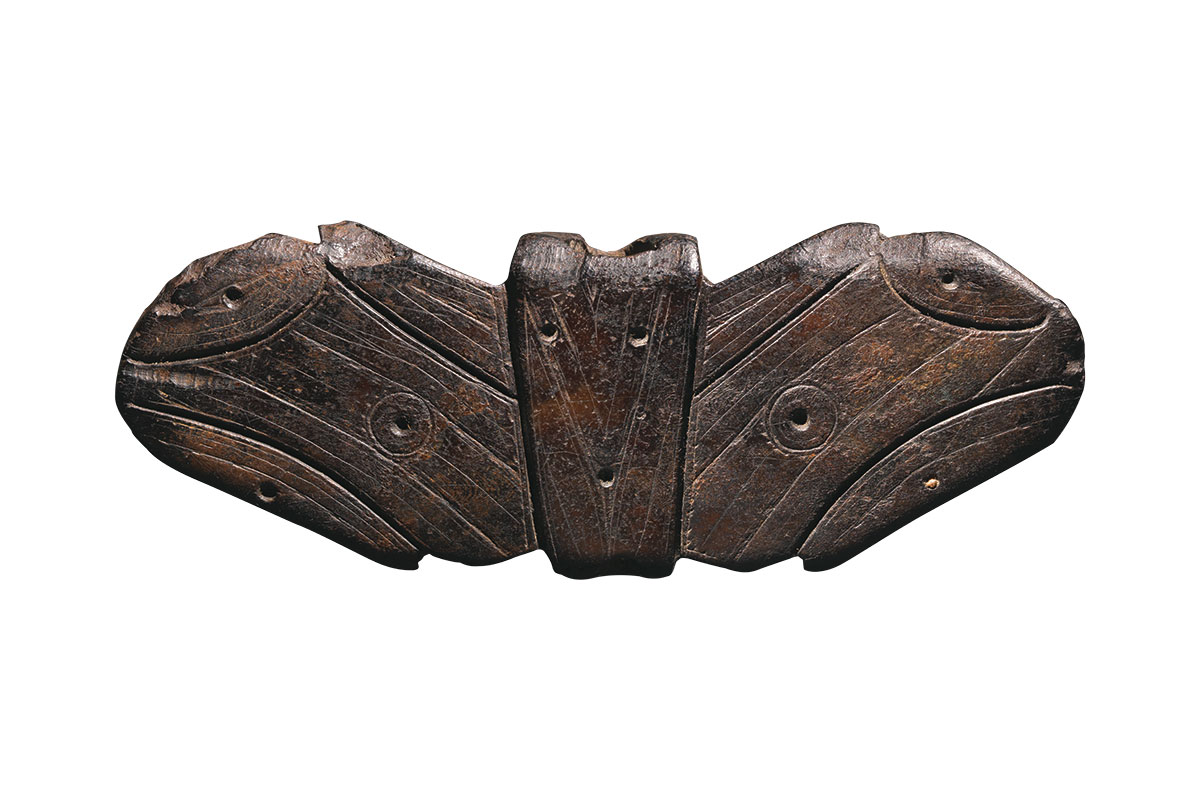Winged Object
St. Lawrence Island, Alaska
100 – 300 CE
marine mammal ivory
width: 5 ¾"
Inventory # E4120-17
Sold
PROVENANCE
Excavated at the Kiknig site in the summer of 2001
Martin Kogassagoon, Savoonga, AK
Bill and Carol Wolf, NJ
Published
Art of the Arctic: Reflections of the Unseen (Ivories), Ellis, London, Black Dog Publishing, 2015, pg. 57, pl. 42
Related Examples
The State Museum of Oriental Art, Moscow, cat. no. 115Dp-IV – See: Leskov, A.M. and Muller-Beck, H. Arktische Waljager vor 3000 Jahren: Unbekannte Sibirische Kunst. Munich: v. Hase & Koehler Verlag, 1993, pg. 120, pl. 76.
For an example with very similar design layout, flipped top to bottom see: Alaska State Museum – See: Larson, Dinah and Terry Dickey. Setting It Free: An Exhibition of Modern Alaskan Eskimo Ivory Carving. Fairbanks: University of Alaska Museum, 1982, pg. 11, pl. 99.
The toggle harpoon of the prehistoric Inuit is a marvel of engineering. At the front is an ivory point, usually fitted with a sharpened stone blade. The point is attached to a small ivory foreshaft, which allows it to pivot after striking the quarry, thus burrowing deep into the flesh of the animal. The foreshaft is fitted into a cylindrical ivory socket piece which in turn is fastened to the front of a large wooden shaft. At the rear of the shaft, an ivory counterweight or “winged object” is often attached.
Over the course of approximately 1000 years spanning several different cultural periods, the basic design of the counterweight underwent a sequential evolution of design. What began as a more simple block device in the Okvik period (200 BC – 100 AD) evolved during the Old Bering Sea III phase (300–500 CE) into a highly developed art form, as demonstrated by the beautiful example illustrated here.

